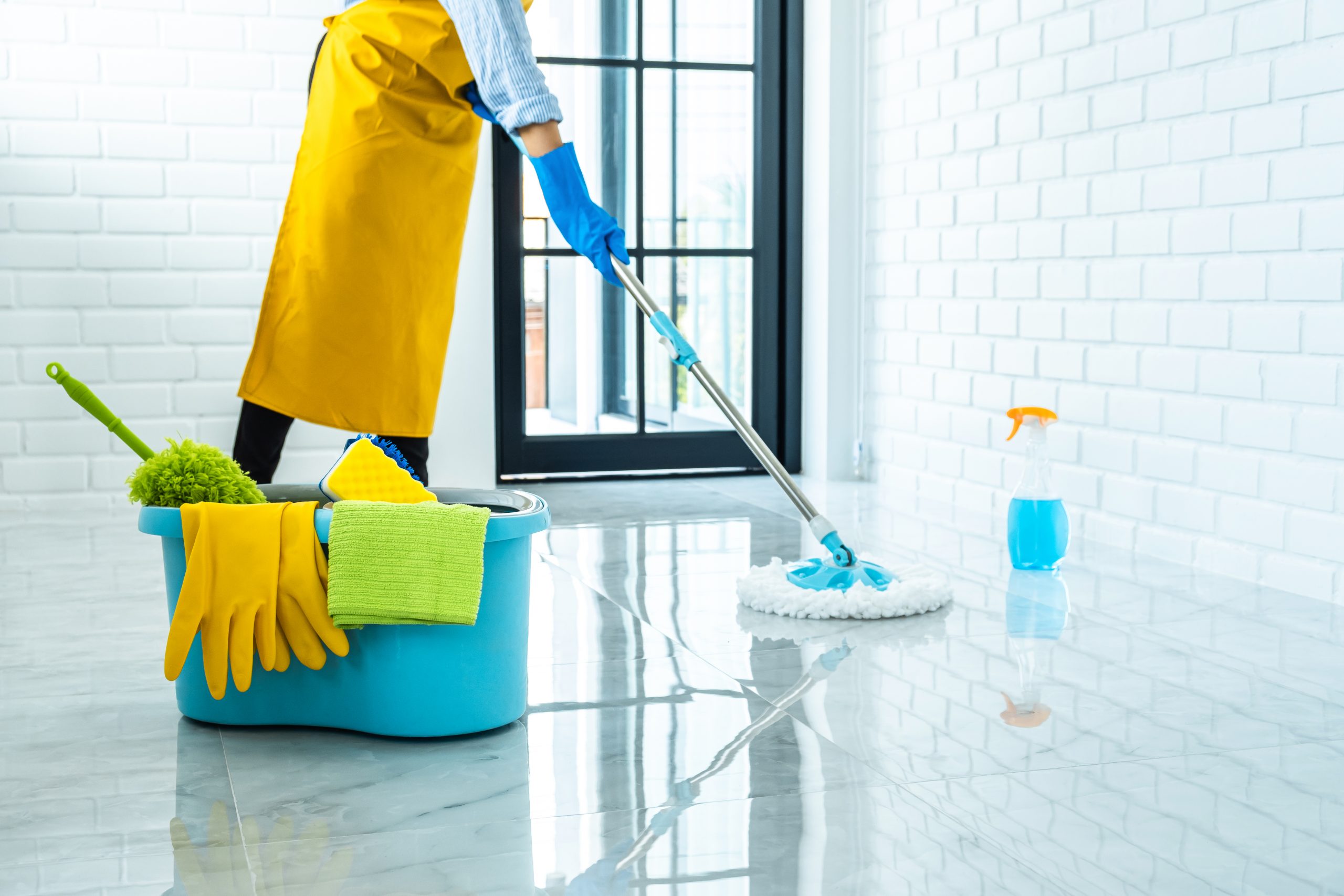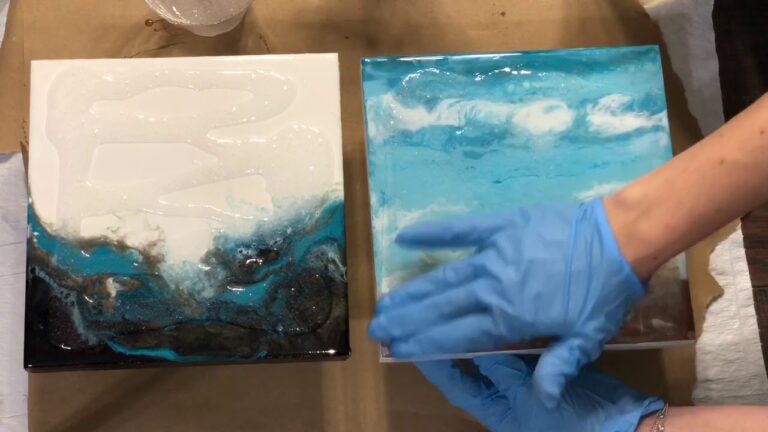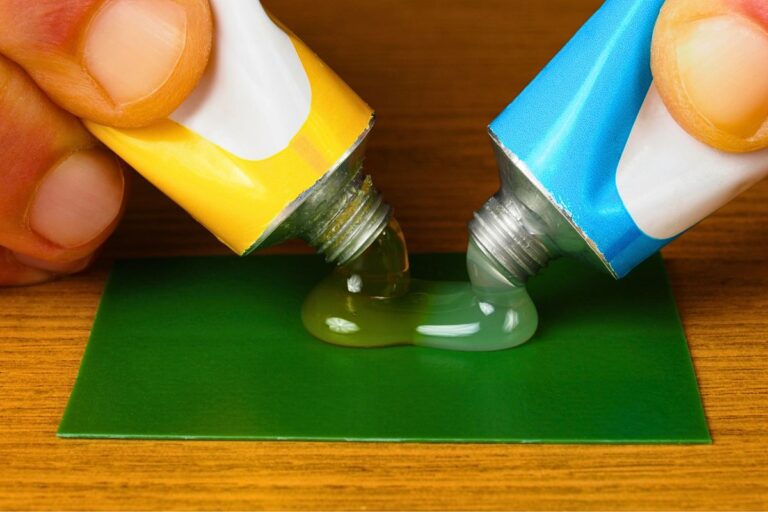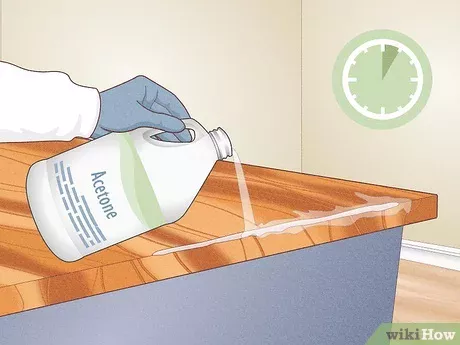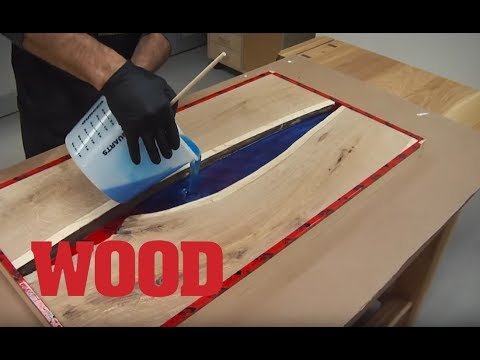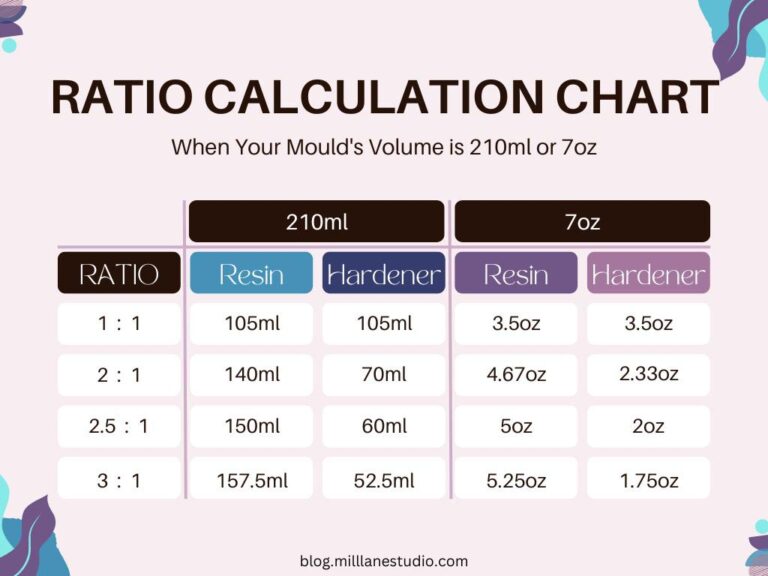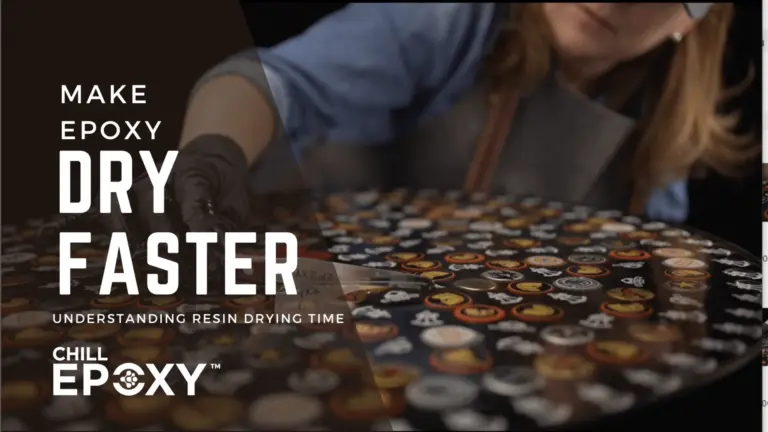How to Clean Epoxy Resin: Effective Cleaning Methods
Cleaning Epoxy Resin Surfaces
Understanding how to clean epoxy resin surfaces properly can maintain their gloss and durability. Whether you’re handling epoxy countertops, tables, or other epoxy-covered surfaces, using the right cleaning methods is crucial.
Safe Cleaning Wipes for Epoxy
To keep your epoxy resin surfaces in pristine condition, safe cleaning wipes are a convenient option. Clorox wipes, including their standard disinfecting wipes, plant-based disinfecting wipes, and compostable wipes, are recommended for epoxy surfaces. These wipes do not contain harsh solvents or bleach, making them ideal for maintaining the integrity of the epoxy finish.
| Type of Wipe | Safety for Epoxy Resin |
|---|---|
| Clorox Disinfecting Wipes | Safe |
| Clorox Plant-Based Wipes | Safe |
| Clorox Compostable Wipes | Safe |
| Bleach Wipes | Not Recommended |
For recommendations on cleaning tools, read how to clean epoxy resin off tools.
Best Cleaners for Epoxy Surfaces
Selecting the right cleaner is essential for preserving the clarity and longevity of epoxy resin surfaces. Standard glass cleaners like Windex are excellent choices for cleaning epoxy since epoxy behaves similarly to glass (BestBarTopEpoxy). Additionally, warm water and mild soap can be used for everyday cleaning.
Here are some recommended cleaners:
| Cleaner | Use Case | Notes |
|---|---|---|
| Glass Cleaners (e.g., Windex) | Everyday cleaning | Suitable for high-quality epoxy finishes |
| Mild Soap and Warm Water | Initial cleaning | Gentle on epoxy surfaces |
| Diluted Rubbing Alcohol (70%-80%) | Sanitizing | Effective in killing germs without damaging epoxy (BestBarTopEpoxy) |
Avoid using pure vinegar as it contains acetic acid that can soften or damage the epoxy surface over time, resulting in a cloudy appearance (BestBarTopEpoxy). For further details on special cleaners, check out what dissolves epoxy resin.
For additional maintenance tips, read about how to polish epoxy resin and how to remove epoxy resin.
Cleaning Epoxy Bar Tops
Initial Cleaning Steps
Keeping your epoxy bar top clean is essential for maintaining its glossy finish. Follow these initial cleaning steps to ensure your bar top stays pristine:
- Warm Water and Mild Soap: Begin by cleaning the surface with warm water and mild soap. This helps remove everyday dirt and grime without damaging the epoxy finish.
- Glass Cleaner: For stubborn residues, you can use a good glass cleaner. This is particularly effective for removing smudges and streaks, leaving the epoxy surface shiny and clear.
- Disinfectant Wipes: For a quick clean and to maintain hygiene, disinfectant wipes are ideal. Ensure you choose wipes that are safe for epoxy surfaces, as noted in our safe cleaning wipes for epoxy section.
Sanitizing and Disinfecting
To ensure your epoxy bar top is not only clean but also sanitized, follow these guidelines:
- Rubbing Alcohol: A diluted rubbing alcohol solution (70% to 80%) is effective for sanitizing epoxy resin surfaces (BestBarTopEpoxy). This concentration is sufficient to eliminate surface germs without damaging the epoxy finish.
- Clorox Wipes: These wipes, including their standard disinfecting wipes, plant-based disinfecting wipes, and compostable wipes, are safe to use on epoxy surfaces like countertops (Best Bar Top Epoxy). They do not contain strong solvents or bleach, making them a good choice for routine disinfecting.
| Cleaning Method | Recommended Products | Purpose |
|---|---|---|
| Warm Water + Mild Soap | Any mild dish soap | General cleaning |
| Glass Cleaner | Any reputable glass cleaner | Removing residues |
| Disinfectant Wipes | Clorox wipes (standard, plant-based, compostable) | Sanitizing and disinfecting |
| Rubbing Alcohol | 70% – 80% rubbing alcohol solution | Sanitizing |
For more in-depth details on how to use epoxy resin and other epoxy cleaning methods, explore our site. If you accidentally spill or need to remove epoxy, read how to remove epoxy resin.
Handling Resin Cups and Tools
Creating beautiful epoxy resin projects often means dealing with messy tools and cups. Proper cleaning and disposal of these items ensures a smooth workflow and environmentally friendly practices.
Cleaning Resin Cups for Reuse
To clean your resin cups for reuse, follow these simple steps:
-
Wipe Off Liquids: While the resin is still wet, use a paper towel to wipe off as much liquid as possible. Doing this early makes the next steps easier (Resin Obsession).
-
Clean the Surface: Use resin remover, denatured alcohol, or acetone to thoroughly clean the cup. Be sure to wear nitrile gloves to protect your skin from irritation (Resin Obsession).
-
Wash with Soap and Water: After removing the resin, wash the cups and tools with quality soap and water. This removes any remaining residue and ensures the cups are hygienic.
-
Dry Properly: Let the cleaned cups dry upside down on a towel. This prevents watermarks and ensures they are ready for the next use.
| Cleaning Step | Tool/Material Needed |
|---|---|
| Initial Wipe | Paper Towel |
| Surface Cleaning | Resin Remover/Denatured Alcohol/Acetone |
| Final Wash | Quality Soap and Water |
| Drying | Towel (for drying upside down) |
For more detailed methods, read our guide on how to clean epoxy resin off tools.
Proper Disposal of Residual Resin
Disposing of residual resin correctly is important for both safety and environmental reasons.
-
Let it Cure: Allow the leftover resin in cups or containers to fully cure. Curing happens when the resin hardens completely, rendering it non-toxic.
-
Avoid Drains: Never pour liquid resin down the drain as it can clog pipes and is harmful to aquatic life.
-
Trash Disposal: Once cured, residual resin can be disposed of in your regular trash. Make sure the resin is fully set and dry before doing so.
-
Read Labels: Always check the manufacturer’s instructions on the resin packaging for specific disposal guidelines.
| Disposal Step | Action |
|---|---|
| Let it Cure | Full hardening of resin |
| Avoid Drains | Do not pour liquid resin |
| Trash Disposal | Dispose of fully cured resin |
| Read Labels | Follow manufacturer guidelines |
These practices ensure you’re cleaning and disposing of resin cups and tools safely and efficiently. For more information on epoxy safety, visit our sections on how to use epoxy resin and how to remove epoxy resin.
Cleaning Resin Molds and Tools
Taking care of your resin molds and tools is essential to achieve high-quality results in your projects. Here’s how you can clean them effectively.
Resin Mold Cleaning Tips
Cleaning resin molds properly ensures they remain usable for future projects. Here’s a simple and effective method to clean your molds:
- Immediate Wipe Down: After you finish using the mold, wipe off any remaining resin with a paper towel while it’s still wet.
- Use a Resin Remover: Apply resin remover, denatured alcohol, or acetone to a cloth and wipe the mold thoroughly. This helps to clear any sticky residue. Be sure to wear nitrile gloves to protect your skin during this step.
- Soapy Water Wash: Wash the mold with quality soap and water to remove any remaining cleaning solution. Rinse well to ensure no soap residue is left.
- Air Dry: Allow the mold to dry completely by flipping it upside down on a towel.
| Cleaning Material | Description |
|---|---|
| Paper Towel | Used for initial wipe down |
| Resin Remover | Helps remove sticky residue |
| Denatured Alcohol | An alternative to resin remover |
| Acetone | Another alternative for resin cleanup |
| Soap and Water | Final cleaning step for residue removal |
The careful cleaning of resin molds ensures longevity, making them fit for repeated use. For further details on epoxy safety, visit our section on is epoxy resin toxic.
Cleaning Used Foam Brushes
Cleaning used foam brushes can be challenging and often less effective. Here’s a straightforward approach:
- Immediate Wipe Down: Wipe off excess resin with a paper towel immediately after use.
- Consider Disposal: Given their absorptive nature, foam brushes are often best disposed of rather than cleaned. Cleaning them thoroughly can be impractical and may compromise future use.
Following these tips can help you prolong the life of your molds and keep your tools ready for your next epoxy project. For additional advice on cleaning tools, check out our guide on how to clean epoxy resin off tools.
For more tips and thorough guides on using epoxy resin, visit how to use epoxy resin and learn about choosing the right cleaning solvents at what dissolves epoxy resin. Remember, proper maintenance of your tools ensures your projects are always top-notch.
Epoxy Safety Precautions
Work Environment Considerations
When working with epoxy resin, it’s crucial to prioritize safety, especially in your work environment. It’s important to work in a well-ventilated space to avoid respiratory irritation caused by concentrated fumes. Proper ventilation helps prevent the buildup of these vapors, ensuring a safer workspace. Consider opening windows and using fans to maintain good air circulation (Eye Candy Pigments).
Skin Protection Measures
Protecting your skin during epoxy resin use is vital to prevent exposure to hazardous substances. Always wear disposable safety gloves made from nitrile or vinyl, as these materials are resistant to the chemicals in epoxy resin. Additionally, wearing plastic aprons can protect both your skin and clothes from accidental spills.
In case of spills, use a waterless, non-solvent skin cleanser to remove the resin from your skin effectively. This helps avoid any prolonged contact with the chemicals and prevents potential skin irritation or damage (Eye Candy Pigments).
It’s essential to recognize that skin contact is the most common route of exposure to resins and hardeners. Even minor contact can lead to chronic health issues. Therefore, always enforce stringent protective measures to keep your skin safe from these substances.
Maintaining safety precautions ensures a healthier working environment and reduces the risk of long-term health problems. For more tips on how to use epoxy resin safely, make sure to review additional safety guidelines.
For more detailed instructions on removing epoxy resin from skin, visit our article on how to get epoxy resin off hands.
Epoxy Resin Cleanup Tips
Choosing the Right Cleaning Solvents
Selecting the appropriate solvent is crucial for effectively cleaning epoxy resin. Here are some recommended solvents:
- Rubbing Alcohol: Using diluted rubbing alcohol (70% to 80%) is an effective way to sanitize epoxy resin surfaces. Apply the alcohol to a cloth and wipe the surface to eliminate most surface germs.
| Solvent Type | Concentration | Application Method |
|---|---|---|
| Rubbing Alcohol | 70% – 80% | Apply to cloth and wipe surface |
Learn more about the various solvents suitable for different cleaning needs in our guide on how to clean epoxy resin off tools.
Removing Hardened Epoxy Resin
Dealing with hardened epoxy resin can be challenging. Here are some effective methods:
- Heat Application: Use heat guns or hair dryers to soften hardened epoxy resin. This method works well for surfaces like plastic, wood, or metal. Once softened, the epoxy can be scraped off.
- Solvent Soaking: For partially cured epoxy, soaking the area with SuperClean Epoxy Cleaner or Isopropyl Alcohol can help soften the epoxy for easier removal. On porous surfaces like concrete or stone, a chisel may be required (Super Epoxy Systems).
| Method | Recommended Tools | Suitable Surfaces |
|---|---|---|
| Heat Application | Heat gun, Hair dryer | Plastic, Wood, Metal |
| Solvent Soaking | SuperClean Epoxy Cleaner, Isopropyl Alcohol | Concrete, Stone |
| Mechanical Removal | Chisel | Concrete, Stone |
For cleaning finished epoxy resin projects like river tables, desks, and serving trays, a combination of soap and water, glass cleaners, or disinfectant sprays can be used. For tougher messes, SuperClean Epoxy Cleaner or Isopropyl Alcohol are effective.
Explore more techniques for removing epoxy in our detailed article on how to remove epoxy resin.
For additional tips on safely cleaning up epoxy resin, including choosing the right cleaning solvents and dealing with different application scenarios, check out our comprehensive guides on how to clean epoxy resin and how to polish epoxy resin.

